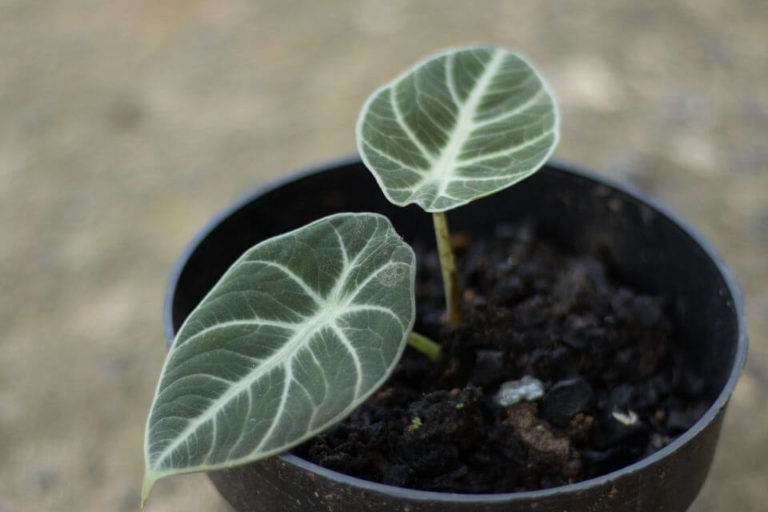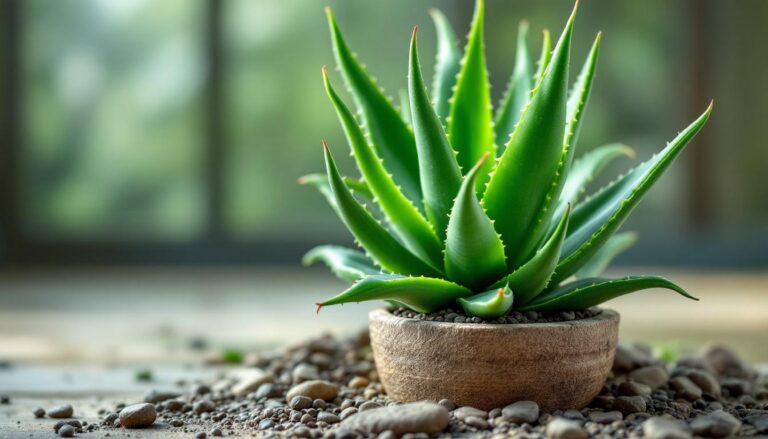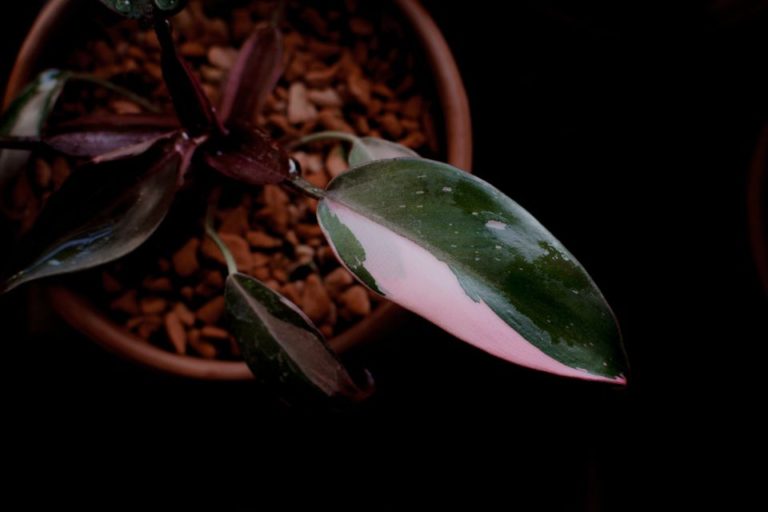Monstera Siltepecana Care And Maintenance Guide – Plant and Propogation
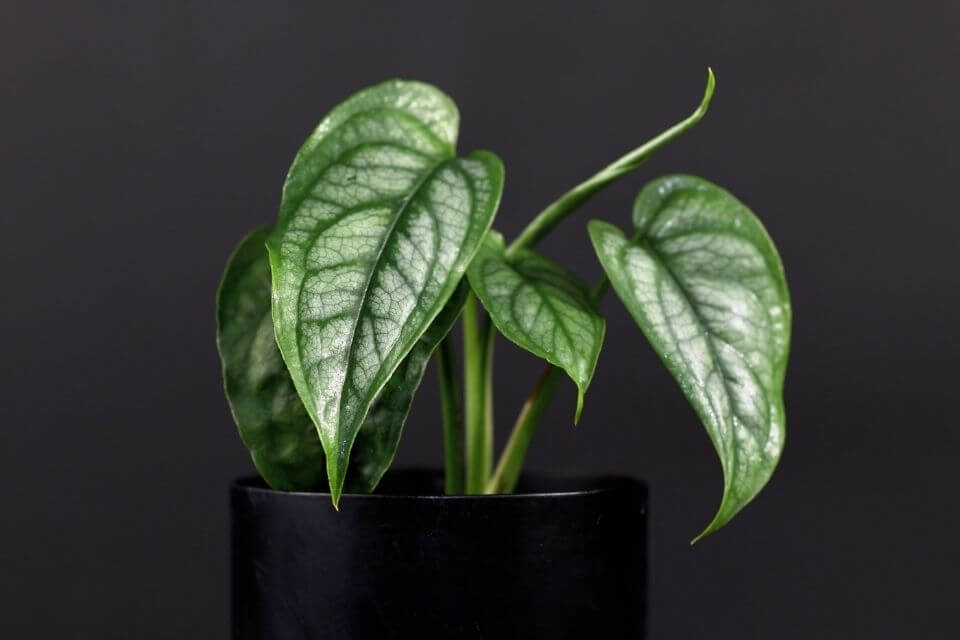
Monstera Siltepecana plant is a unique and exciting houseplant that features large leaves, distinct veins, and beautiful white flowers.
This post will give you everything you need to know about caring for a Monstera Siltepecana plant, including where they grow best, what type of soil they like, the types of light they make best watering habits, and more.
The post will also discuss how to propagate this lovely tropical plant so that you can share it with friends. So grab some coffee or tea because this is going to be an informative read.
| Highlights: | |
|---|---|
| Common Names: | Monstera Siltepecana |
| Botanical Name: | Monstera Siltepecana |
| Plant Family: | Araceae |
| Plant Type: | Tropical perennial vine |
| Origin/Native: | Southern Mexico and Central America |
| Care Level: | Easy |
| Grow Zone: | 10 - 12 (USDA Hardiness Zone) |
| Size: | Rise up to 8 ft. tall and spread about 2ft. - 3 ft. The leave is 2 - 3 inches long and about 2 inches wide. |
| Soil Requirement: | Light and well-draining soil with low pH levels |
| Water Requirement: | Medium moisture levels |
| Sun/Lighting: | No direct sunlight, but require bright light |
| Temperature Req: | 55 - 90 °F (12 - 32°C) |
| Propagation: | Stem cutting |
| Toxicity: | Toxic to animals and humans when swallowing |
| Flowering/Color: | Yes, and has a cream-colored and heart shape flower with hints of yellow and brown. You only can see it boom outdoors. |
| Uses: | House plant for decorative purposes, increases air quality. |
TABLE OF CONTENTS
Monstera Siltepecana Plant Overview & Origination
Monstera Siltepecana plants originate from Central America and are a member of the Araceae family. Grow the plants as houseplants in temperate climates because they cannot survive temperatures below 50 degrees Fahrenheit.
Grow the plants outside in warmer climates as ornamental trees but make excellent houseplants for those who live in colder zones since they do not require much light and do not need a lot of water.
Monstera Siltepecana plants are air-purifying houseplants and have several health benefits attributed to them. They are also beautiful and make an excellent addition to any home.
Appearance, Size, And Growth
Siltepecana plants have large leaves and distinct veins, and white flowers that grow in clusters on the tips of branches and bloom during the summer months.
They appear to have three to five leaves that grow in a semicircle that you can quickly identify by their large leaves. The Monstera Siltepecana plant is a slow-growing vine that will climb about 8 ft. in height.
Prune or trim to control the size of the plant, but as it grows; it can afford to take on more water and sunlight. This means that they are not complex plants to care for.
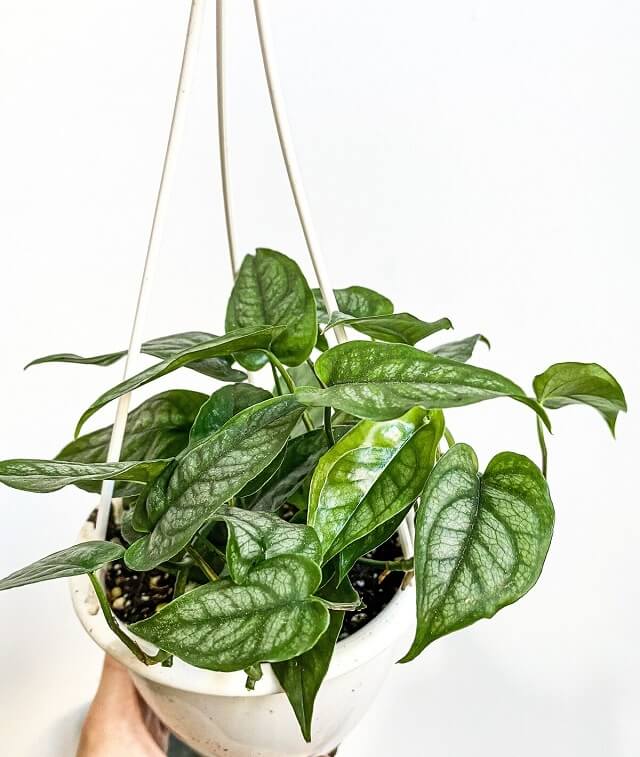
Monstera Siltepecana Plant Care
Monstera Siltepecana houseplants are very easy to care for and require minimal maintenance and upkeep. Plant care is easy and does not require a lot of time or effort to nurture.
The following Monstera Siltepecana care instructions will give you everything you need to know about Monstera plant care.
– Soil Requirement
Monstera Siltepecana plants prefer well-drained soil. Soil with good drainage will eliminate any excess moisture that may build up around your plant, causing root rot or other issues.
Keep the soil moist at all times, but it is essential not to overwater the plant. A soil that allows air circulation around the roots is ideal for this plant. Soil that is rich in organic matter will help keep your Monstera happy as well.
If you have well-drained soil, this will be one less thing to worry about when caring for your plant. So if you are using a regular potting mix from the store, make sure you add a few organic materials to the dirt as well.
You can also use sand in combination with some compost or shredded leaves for the best results. A suitable soil type would be excellent loam-based potting soil.
– Watering Silver Monstera
In general, Monstera Siltepecana houseplants do not require a lot of water. Water your plant when the soil is arid to the touch and ensure that you do not over-water them.
Watering too often can lead to root rot and may kill your houseplant, so it is best to become familiar with how much water the plant requires.
Water your plant thoroughly and gently from the top with room temperature water so that you do not disturb its roots. The main reason you should water from the top is that it will get water to its roots faster.
Watering from the top also has another benefit in that it prevents the soil from splashing onto the leaves when you water. You can also get a drip tray to keep moisture around your plant and avoid having to water the entire pot.
– Lighting
People often overlook lighting when it comes to planting care, but keeping your plants near windows can enhance the quality of the plant. This is important since sunlight helps keep your plant happy by providing energy and heat.
The natural light will also keep your Monstera’s leaves from becoming discolored or yellowing. So be sure to place your plant in a location where it can receive plenty of light each day.
It is best to keep this type of plant out of direct sunlight as much as possible for it to thrive. In this case, it is good to place a sheer curtain or some other type of cover to help block out any excess heat.
When you can create an indoor greenhouse environment for your plants, then go ahead and try that as well. You can also use grow lights to ensure that your treasured plant is getting the right amount of lighting that it needs.
– Temperature Requirement
You want to make sure that your Monstera Siltepecana houseplant does not get too cold or too hot, so you need to observe what is going on with the environment around it.
The temperature should be between 55 and 90 degrees Fahrenheit (12˚C to 32˚C) for optimum growth. But this plant can survive below 60 ˚F but not less than 50˚F (10 degrees Celsius).
Temperature changes due to weather (hot and cold) can affect how well your plants grow over time, so it is best to keep them in a controlled environment if you want them to thrive.
Temperature can change the leaves, flowers, and even how your plant tastes. This is why it is best to be careful with this factor when caring for plants.
Temperature changes will affect your Monstera houseplant whether you like it or not. Temperature drops can cause the foliage of your Monstera houseplant to become brittle or brown with a clear appearance and will inhibit flowering.
If the temperature rises above 85 degrees, Fahrenheit will leave a leathery feeling texture and dryness and cause new flowers to form along with bursting leaves from excessive heat.
– Humidity
Humidity levels should be between 60% to 90% for your Monstera houseplant to thrive. Air quality and humidity will constantly change over time, so you always need to observe what is going on with the environment around your plants.
Changes in humidity levels will also affect pollen development with your Monstera houseplant because wounds affect your plant’s ability to grow as well, which can cause your plants to lose leaves or even die.
To change humidity, place humidifiers or dehumidifiers in a room with your plants, so you always need to be aware of the right amounts.
Humidity is necessary for the growth of plants, which is why you need to make sure that your Monstera houseplant has adequate quantities, or else it will suffer from dry patches and over-drought conditions.
– Adding Fertilizer
Fertilizing is something that you need to do often for your plants to perform their best and maintain a healthy growth rate. It helps promote seed germination, which can be very helpful when it comes to propagating new plants from existing ones.
In addition, it helps prevent nutrient deficiencies and other problems caused by a lack of nutrition, keeping your plant’s disease-free and healthy.
Administer fertilizer regularly, but not so often that you run the risk of over-fertilizing your plants. Fertilizing your Monstera houseplant is an essential part of plant care, especially during peak growing seasons.
Purchase Fertilizer d at any nursery or gardening supply store, but it is always vital to make sure that you are getting the correct type of fertilizer for whatever plant care you need to use it for.
– Pruning Monstera Siltepecana Plant
Stem Pruning: Prune Monstera Siltepecana with a sharp knife. In addition, you can trim the plant when a plant is actively growing but before the plants start flowering. Nevertheless, it can also do with hand clippers.
Use sharp tools because cutting live flesh releases chemicals that inhibit the healing of any wound, and the plant expels these chemicals through the leaves of Monstera plants.
Pruning Monstera plants back hard will sometimes increase flower production. This seems to be especially true for female plants in winter and early spring. However, this is not a guarantee.
Pruning is an integral part of Monstera plant care and does it more often to maintain the shape and size of your plants. When cut, a Monstera stem, it should be cut to a point where there will be a basal, horizontal set of leaves.
– Repotting Monster Siltepecana
Re-potting, a Monstera Siltepecana plant, is similar to most other houseplants in that it re-pots every two or three years. It is necessary for plants that have become too large for the size of their pots.
Re-potting allows you to provide your plants with more nutrients and gives them more room for their roots to grow and increase and maintain the health of a plant.
Re-potting should be done as often as needed and always re-pot when your plants begin to become root-bound in their pots.
Any time you notice the roots growing around the edge of the pot, or if your plants have become too big for their current size container, remember not to overwater after re-potting, for it will kill your plant.
Do the Re-potting in the spring or summer. When the soil is warm and moist, there are enough leaves to provide sunlight for your plants’ new growing season.
– Propagation
Propagate Monstera Siltepecana by air layering because this propagation method does not involve disturbing the roots of the parent plant. Spreading by air layer is also a great way to prevent fungi from infecting your plants’ roots.
Take cuttings from an actively growing plant in spring. Try to develop the air layered cutting for 3-4 weeks before planting it in the ground or putting it into a permanent container. Re-pot the cutting into a container with fresh soil.
The most important thing to remember when planting Monstera air layered cuttings is to make sure the soil you are using drains well and that it stays moist but not wet.
Air layer cuts in spring for summer transplanting. Do not plant air-layered cuttings in water. Transplant into prepared soil immediately. Air layered Monstera plants are straightforward to propagate and maintain.
It would be best to keep in mind that it is important not to overwrite the roots of a newly planted cutting for at least three weeks after transplanting it.
If you plant air-layered Monstera in water or potting soil, it will usually grow roots and become a new stem – you want to pinch off these stems before they grow too large.
If there are any, tiny leaf buds on your stem, leave them alone and they should grow new leaves.
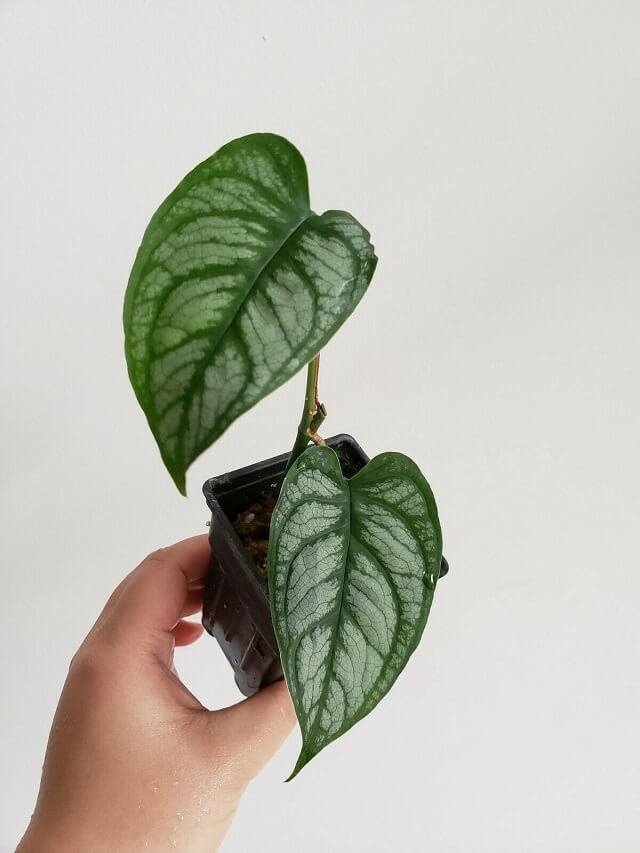
Common Monstera Siltepecana Propagation Techniques
– Perlite Propagation
Sometimes, it propagates Monstera plants by taking a stem cutting from between two leaves or a leaf node and inserting it into perlite.
Perlite is an excellent medium for propagation because its wetting and drying characteristics mimic humid tropical conditions, which are best for Monstera.
Perlite is commonly available and inexpensive too, which makes it an excellent choice for plant propagation.
Insert the cutting into the perlite so that only half of it is submerged in the medium; make sure you don’t leave any part of the stem exposed to air as this will cause disease.
Once in the perlite, your cutting will begin to make new roots and leaves. Once you have a healthy stem sprouting from your cutting, transplant it into potting soil and sand; this will provide good drainage for your plant.
Remember propagation through perlite can take anywhere from 2 months to over a year before you see any growth, so be patient.
– Water Propagation
Aquaculture is very similar to air layering, except that the stem submerged in water does not have a leaf bud growing from it.do it in many different mediums, including but not limited to potting soil, sand, and even water.
Water propagation works best because Monstera plants like to have wet roots. This is the quickest way to propagate a Monstera plant, and you can get multiple stems from the cutting if it has already begun growing new roots.
This method works best with Monstera because the roots are susceptible to disease, so aquaculture helps keep any conditions from getting started by keeping all of your plant’s roots in water.
– Soil Propagation
Do soil propagation in any potting soil, and it has the added benefit of allowing you to grow several stems from one cutting. Soil layering works by keeping your stem submerged in moist potting soil.
Soil rooting takes longer than other techniques, but once it does start growing roots, you will have a healthy new stem. It takes a little longer than other methods because you must wait for your cutting’s stems to grow roots in the soil.
Once it has roots then you can transplant them into the ground. Use soil propagation is best used when cloning a stem that already has roots, but if you start with an air layered cutting, then Soil propagation is your best bet.
Monstera Siltepecana Plant Uses
They are great for using as houseplants because they prefer humid tropical conditions. Monstera does well in living rooms, kitchens, and especially bathrooms.
You do not need to worry about pruning any dead or dying leaves either because Monstera plants drop their leaves each year and grow new leaves each spring.
Monstera plants are also great for hanging baskets because they have sturdy, strong stems. Hang your plant on a porch, add it to your living room décor with a tall hanger, or stand.
If you plan to use your Monstera pot in a cold place during the winter, make sure that it has enough room to survive, for they will die if left outside exposed to freezing weather temperatures for long periods.
How to Prevent Common Diseases and Pests Problems
Monstera plants are susceptible to many pests and diseases. These include:
– Spider Mites
Monstera plants are susceptible to spider mites and fungal diseases these will kill the plants quickly if not taken care of. To keep your plant from being infestation with pests or diseases, you should always let it dry out between watering.
If you overwater your Monstera plant, the fungus will begin to grow and spread through its leaves.
You can tell your Monstera is suffering from pests or disease when you see the plant’s leaves turning brown, curling up, dropping off, and having tiny black dots on them.
– Root rot
It is a common problem with potted plants, especially tropical ones. If your Monstera plant has root rot, then its roots will be brownish-black and soft.
Root rot occurs when the soil around your plant’s roots stays too wet for too long. This leads to the roots of your plant rotting.
– Aphids
You can tell your Monstera is infested with aphids when you see yellow, brown, or black spots on its leaves. These little green bugs suck the sap from plant stems and leaves.
If your Monstera has Aphids, remove any affected leaves and rinse them off in the sink. You should also give your plant a good water spray and add some mild insecticide if you do not want to use chemicals.
Scale
These tiny bugs look like brown or black bumps on Monstera stems and leaves. Scale is painless and is easy to get rid of. If you notice that your Monstera has a scale, then remove any affected leaves and twigs with rubbing alcohol.
Next, you should spray the plant down with a mixture of water and soap or insecticidal soap.
Other Problems with Monstera Siltepecana Plant and Solutions
Leaves Discoloration
Monstera leaves discoloration can occur when you overwater your Monstera or if it gets an abundance of direct sunlight.
You can tell your Monstera plant is receiving too much light when the leaves turn yellowish-green or brown, indicating sunburning on top of overwatering.
If you notice that the bottom part of your Monstera leaves is turning brown, it probably is not getting enough humidity. The best thing to do is to put your plant in a shade that will help keep its leaves and stem green.
Humidity helps prevent discoloration because it promotes healthy growth.
Dropping Leaves
If your plant is dropping its leaves, then you may have overwatered it. If the roots feel wet for long periods, the plant will automatically decrease its leaves because it cannot handle that amount of water without rotting.
The best thing to do when this occurs is to allow the soil to dry. If it is dropping its leaves, then it could have a disease.
If you notice that the bottom of the leaves is turning brown or yellow, then you probably have a fungal infection that requires immediate attention. You should remove all affected parts of the plant and dispose of them.
If your Monstera is dropping its leaves, then you may have underwatered it. If you leave the soil to dry for too long, then your Monstera will stop producing new growth because it needs water to do so.
FAQs
How Do You Know If Monstera Siltepecana Is Overwatered?
Monstera plant is overwatered when its leaves begin to wilt. If you see this occurring, you should immediately cut back on the amount of water given to your Monstera plant.
Does Monstera Siltepecana Need Sunlight?
Grow Monstera plants in partial shade. If placed in direct sunlight, the sun will destroy the chlorophyll contained in its leaves, causing them to turn brown and become spotted with yellow.
Is Monstera Siltepecana Plant Toxic?
The Monstera plant is toxic to pets such as dogs and cats. If your pet has eaten a leaf from your Monstera, then you should take them to the vet immediately for treatment.
Do Monstera Siltepecana Plant Flower?
Monstera does not produce flowers, but their baby plants are called plantlets. These appear on the sides of the leaves and you can plant them in your pot to make a new Monstera plant.
Are Monstera Siltepecana Fast Growing?
Monsteras grow fast when provided with plenty of water and sunlight. If you do not get either one right, your Monstera will start to drop its leaves like a sign that you are s not taking care of it correctly.
Does Monstera Siltepecana Have Fenestrations?
Monstera’s do not have fenestrations. It will only appear to be that way if you are looking at it from underneath.
Why Is My Monstera Siltepecana Turning Yellow?
If your Monstera plant is turning yellow, then it could be getting too much light. The sun is placed in direct sunlight, causing its leaves to turn spots yellow or brown, which will destroy the leaf’s chlorophyll.
Takeaway
Monstera Siltepecana plants are easy to care for, and they require minimal maintenance. Make sure that you keep it under optimal lighting while providing the required humidity levels for a healthy plant.
If you are looking for a houseplant that requires little work but still looks beautiful in your home or office space, the Monstera Siltepecana plant should be at the top of your list.



